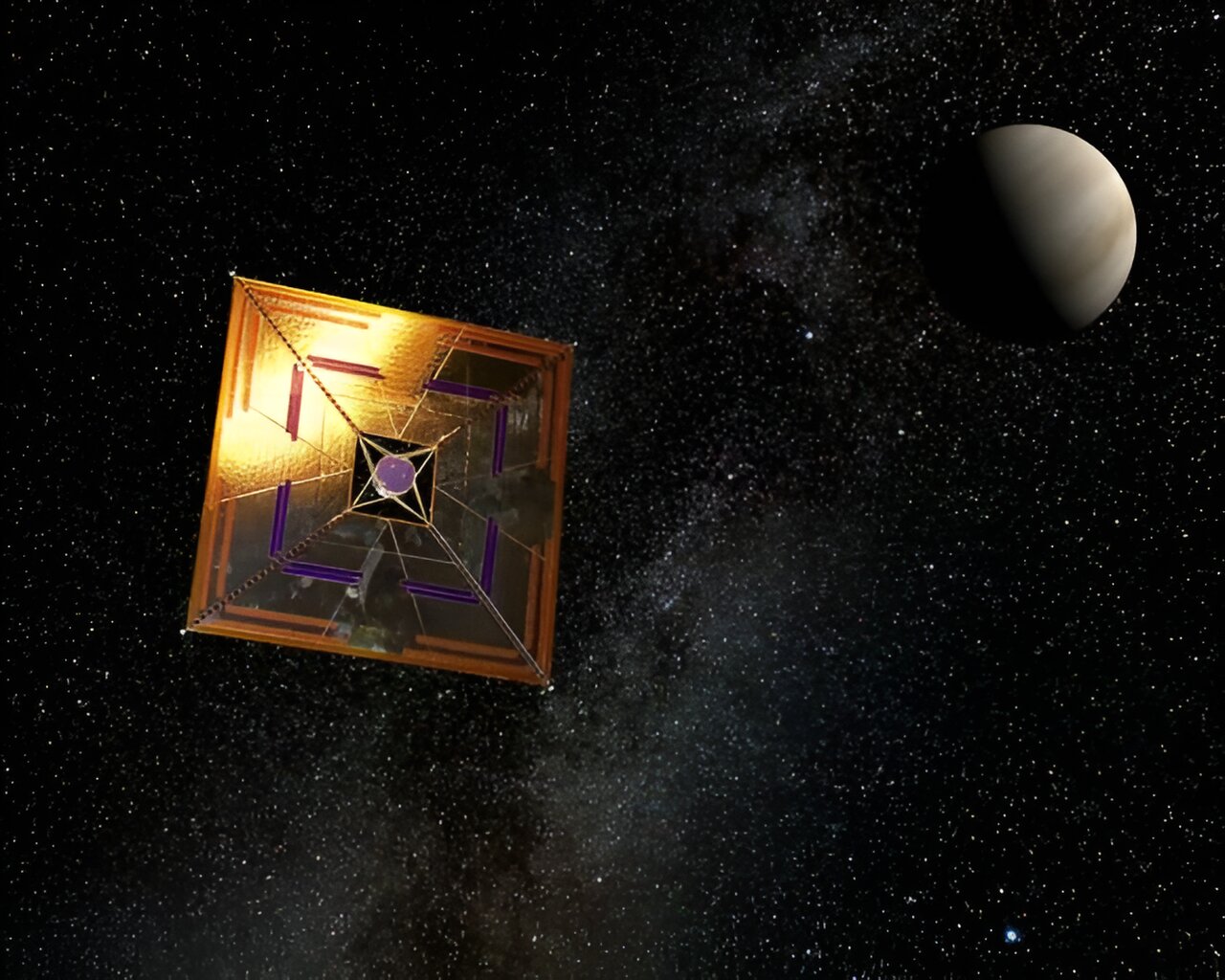Scientists have proposed to create a Mercury Scout spacecraft, which should explore the planet closest to the Sun in our system. It is supposed to use a solar sail, which is better suited for this mission than other ways of accelerating in space.

What is a solar sail?
Solar sails are capable of creating spacecraft acceleration using light pressure on large planets. The closer the spacecraft with them is to the Sun, the more efficient they are.
Recently, scientists have proposed a new mission called Mercury Scout. It aims to take advantage of this feature of solar sails to explore Mercury. The mission will map the surface of the planet with a resolution of 1 meter. In addition, the spacecraft uses the high reflectivity of the sail surface to illuminate shaded craters, which will help to find hidden deposits of water ice.
Back in the early 21st century, the Planetary Society created the Cosmos 1 solar sail spacecraft. It was launched in June 2005, but due to problems with the Russian launch vehicle, it never reached orbit. So, the first successfully launched solar sail spacecraft was Ikaros, launched by JAXA. It has perfectly demonstrated that this technology works.
Since 1905, it has been known that light consists of tiny particles known as photons. They don’t have mass, but when they travel in space, they have momentum. When a tennis ball hits a racket, it bounces off the strings, and part of the ball’s momentum is transferred to the racket.
In a very similar way, photons hitting a solar sail transmit part of their momentum to it, and provide a small push. While the action of photons on the sail continues, there is also momentum. And when it lasts for a certain amount of time, it’s called acceleration.
Mercury Scout Mission
First, Mercury Scout will be launched into low-Earth orbit using a conventional carrier. There, it will deploy its solar sail and use it to enter Mercury’s trajectory. The mission’s main objectives will be mapping the distribution of minerals on the surface, obtaining images with a resolution of up to 1 meter, and identifying ice deposits in permanently shaded craters.
For all this, Mercury Scout will need a sail with an area of about 2500 square meters and a thickness of 2.5 microns. It will be made of CP1 aluminum, similar to that used in the thermal shield of the James Webb Space Telescope.
Four separate sail elements will be deployed along the carbon fiber supports, allowing the spacecraft to reach Mercury in 3.8 years. Upon arrival, it will move into the planet’s polar orbit and then spend another 176 days mapping the entire surface.
Advantages of solar sails
In order to map the entire surface of Mercury, the orbit will need to be maintained by changing the angle of the sail. Just as the captain of a sailboat can sail against the wind, and sometimes downwind, by adjusting the angle and position of the sail, so a solar sail can be used to create thrust in the right direction.
Unlike other more traditional rocket engines, the use of which is limited by the availability of fuel, here the propellant serves until its material is completely degraded. Its life expectancy is about 10 years. Additional coatings are being investigated to find out if it is possible to extend the life of the sail.
According to phys.org
Follow us on Twitter to get the most interesting space news in time
https://twitter.com/ust_magazine


